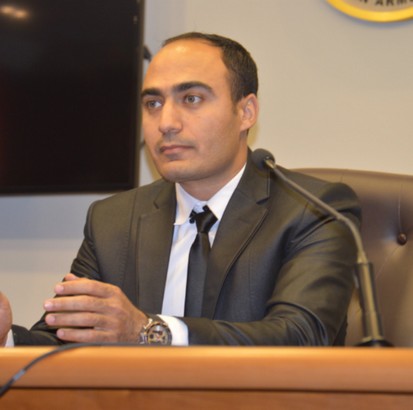What are the Differences between Arabic Languages?
One of the most frequent questions I receive from clients on a daily basis is: what are the differences between the Arabic “languages” used in different Arabic countries? This is quite an important question and is as complex as the Arabic language itself.
The Arabic language is one of the oldest and most wide spread languages. It is an official language in about 26 countries and the native language for more than 290 million people. The language itself is very rich and highly expressive, and it takes its pride from being the language of the Quran, Muslims’ holy book. (Source: Wikipedia)
To answer the above question, we need first to differentiate between the written language and the spoken local dialectal variations of the language.
Countries that widely use Arabic:
| Algeria | Eritrea | Libya | Saudi Arabia | Western Sahara |
| Bahrain | Iraq | Mauritania | Somalia | Yemen |
| Comoros | Israel | Morocco | Sudan | |
| Chad | Jordan | Oman | Syria | |
| Djibouti | Kuwait | Palestine | Tunisia | |
| Egypt | Lebanon | Qatar | UAE |
Written Arabic
For written Arabic, nearly all Arabic speaking countries use the Modern Standard Arabic (MSA) as their official written language. It is the language used in the media, publications, government official papers, etc., except for some local differences that will be explained further in this article. Originally MSA is derived from the classical Arabic – the language of Quran, but it is the most commonly used language now because, in addition to being formal, it is simpler than classical Arabic.
Dialects and Spoken Arabic
Imagine having people in 27 countries with different geographical borders, local cities, villages, groups and cultures, all speaking the same language. That is where the complexity comes from; every country has its own dialect and other sub-dialects for its internal cities, groups, etc. For example, in Egypt, you will find different dialects for people living in Cairo, Upper Egypt, or Sinai, just to name a few. And the same applies for all Arab countries.
The forms of spoken Arabic vary from just simple dialectal differences, as in the pronunciation or meaning of some words, to a complete distinct form of the language. Consequently, while most of the Arabic speaking citizens can understand each other regardless of these dialectal differences, communication can be hard for some other countries as if they are using different languages. For example, Syrians, Palestinians, Saudi Arabians or Egyptians can communicate with each other very well; however, if they tried to communicate with Moroccans or Algerians, they would feel that the latter’s spoken language is closer to French than to Arabic.
What are the Locale Differences in Written Modern Standard Arabic (MSA)?
As mentioned above, in nearly all Arabic countries, people use the same written language which is the Modern Standard Arabic (MSA). However, there are some local differences among countries. The most dominant cases are:
1. Calendars. The use of calendars differs from one Arab country to another. Some of the Gulf countries especially Saudi Arabia uses the Hijri Islamic calendar, which is a lunar calendar consisting of 12 months and marks the great events in Muslims’ lives. Other countries like Egypt, Sudan, and Yemen prefer using the Gregorian Calendar, whereas other countries like Syria, Palestine, Jordan, Lebanon and Iraq use the Assyrian calendar. (Source: Wikipedia)
2. Numbers: As with the calendar, numbers are used differently in Arab countries. Some countries like to use the Arabic-Indic numerals or Hindi numbers (٠ ١ ٢ ٣ ٤ ٥ ٦ ٧ ٨ ٩). On the other hand, some Arab countries prefer using the Arabic Numerals (0, 1, 2, 3, 4, 5, 6, 7, 8, 9). Some countries might not have certain rules for using a specific type of numerals; in this case, it is left to the writer to decide which numerical system to use.
3. Proper and Product Names: Arab countries also adapt a different approach when it comes to proper and product names. Some countries that tend to be more conservative and language sensitive, for example Saudi Arabia, like to translate everything into Arabic. However, in other countries that are less conservative, like Egypt, Lebanon and the United Arab Emirates, people tend to keep the names in the source language instead of localizing them. For example, the word “mobile phone” will be used in Egypt as “موبايل” which is the transliteration of the English word, but in Saudi Arabia they will use “الجوال” which is the translation of the word.
4. Locale Specific Terminology: All Arabic speaking countries use and understand the Modern Standard Arabic. However, some countries prefer to use their own local terminology, which is simply the terminology that is widely used in this specific country.
Dialects in Written Form
It is also worth noting that there is a tendency nowadays to use the colloquial spoken dialects in written forms as well, especially in social media channels and forums. People tend to use it as it is easier and it reflects their daily life style. This language preference is something translation agencies definitely need to consider when translating and copy writing such content.
Know your Audience and your Translators
When localizing content about your product and/or services into the Arabic language, it is crucial that you identify your target audience and define if the copy is directed to all Arabic countries, or to a specific locale (country). Hiring copywriters or translators or a translation agency with in-country experience and native speaker translation teams is critical! I have worked with translation teams and on projects for a multitude of Middle Eastern countries including Bahrain, Egypt, Iraq, Jordan, Qatar, Saudi Arabia and the United Arab Emirates. Understanding where your content will be used is key to the success of your business in the Arab world!
